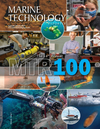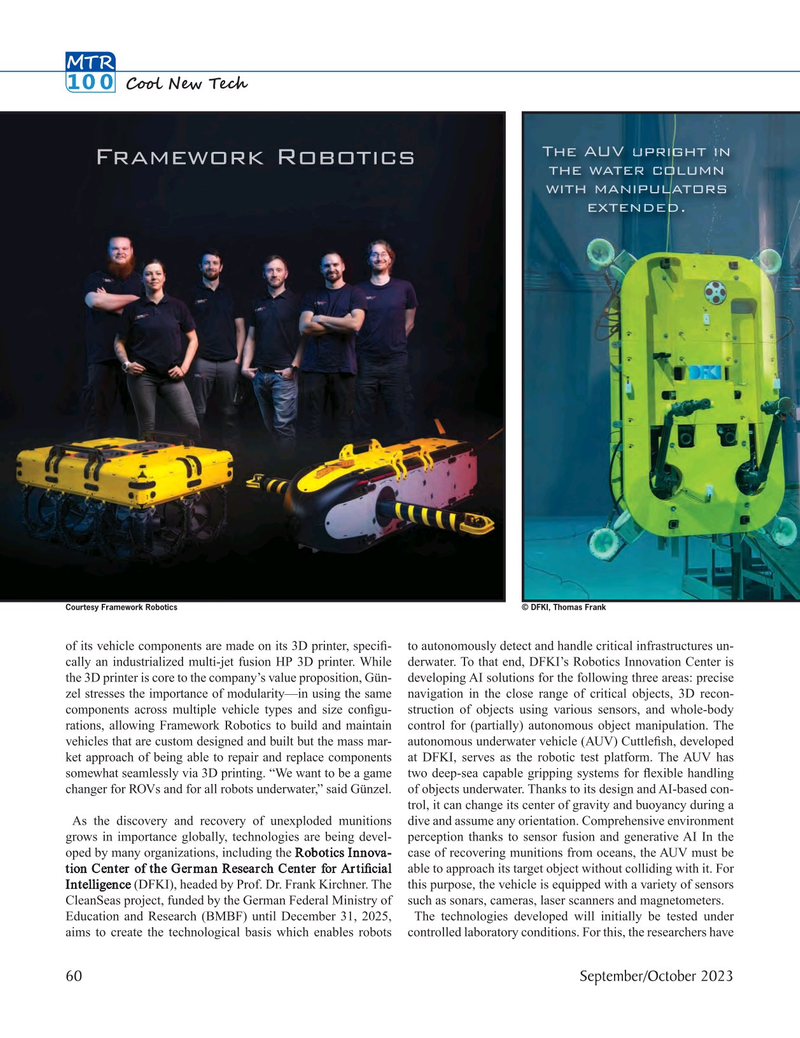
Page 60: of Marine Technology Magazine (September 2023)
Read this page in Pdf, Flash or Html5 edition of September 2023 Marine Technology Magazine
MTR
Cool New Tech 100
The AUV V u u up p pr rig g g g g gh ht t iiiiiin n n n n n
FrameworkRobotics the wate er r r c co o o o o o ol lu um mn n n n n n n n n n w with man n nip pu ul l l l l l lato or r r r r r r r rs s exte e en nd de ed d d d d d d.
Courtesy Framework Robotics © DFKI, Thomas Frank of its vehicle components are made on its 3D printer, speci? - to autonomously detect and handle critical infrastructures un- cally an industrialized multi-jet fusion HP 3D printer. While derwater. To that end, DFKI’s Robotics Innovation Center is the 3D printer is core to the company’s value proposition, Gün- developing AI solutions for the following three areas: precise zel stresses the importance of modularity—in using the same navigation in the close range of critical objects, 3D recon- components across multiple vehicle types and size con? gu- struction of objects using various sensors, and whole-body rations, allowing Framework Robotics to build and maintain control for (partially) autonomous object manipulation. The vehicles that are custom designed and built but the mass mar- autonomous underwater vehicle (AUV) Cuttle? sh, developed ket approach of being able to repair and replace components at DFKI, serves as the robotic test platform. The AUV has somewhat seamlessly via 3D printing. “We want to be a game two deep-sea capable gripping systems for ? exible handling changer for ROVs and for all robots underwater,” said Günzel. of objects underwater. Thanks to its design and AI-based con- trol, it can change its center of gravity and buoyancy during a
As the discovery and recovery of unexploded munitions dive and assume any orientation. Comprehensive environment grows in importance globally, technologies are being devel- perception thanks to sensor fusion and generative AI In the oped by many organizations, including the Robotics Innova- case of recovering munitions from oceans, the AUV must be tion Center of the German Research Center for Arti? cial able to approach its target object without colliding with it. For
Intelligence (DFKI), headed by Prof. Dr. Frank Kirchner. The this purpose, the vehicle is equipped with a variety of sensors
CleanSeas project, funded by the German Federal Ministry of such as sonars, cameras, laser scanners and magnetometers.
Education and Research (BMBF) until December 31, 2025, The technologies developed will initially be tested under aims to create the technological basis which enables robots controlled laboratory conditions. For this, the researchers have 60 September/October 2023
MTR #7 (50-65).indd 60 10/2/2023 3:43:10 PM

 59
59

 61
61
